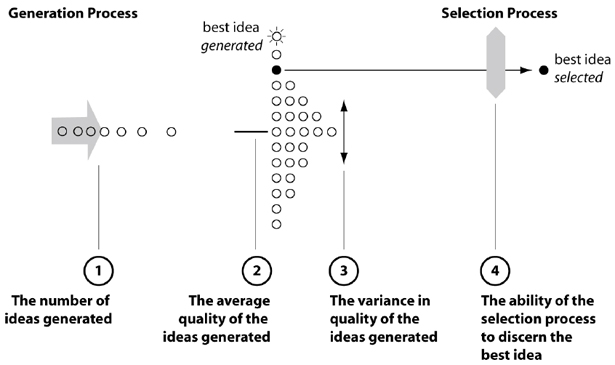This must seem extremely obvious to educational practitioners, but anyhow: here is a study that compares two approaches for generating ideas – one a classical brainstorming that begins to look at ideas collectively right after a question or challenge is introduced, the other a variation where, after the introduction, time is given for each individual to develop some initial ideas on their own: Girotra, Terwiesch and Ulrich (2009) Idea Generation and the Quality of the Best Idea.
Well, I don’t know about the University of Pennsylvania, but where I live and work, brainstorming sessions always combine different elements that seek to benefit both from the creativity of individuals and the collective wisdom of the group. Against this experience, much of the study itself is pretty unamusing, but the graphical illustration of applying extreme value theory to processes of idea generation is interesting nonetheless:
In looking at the best idea generated—rather than the average quality of ideas—the authors identify four factors underlying the performance of the idea generation process:
“We build theory that relates previously observed group behaviour to four different variables that characterize the creative problem solving process: (1) the average quality of ideas generated, (2) the number of ideas generated, (3) the variance in the quality of ideas generated, and (4) the ability of the group to discern the quality of the ideas.”
